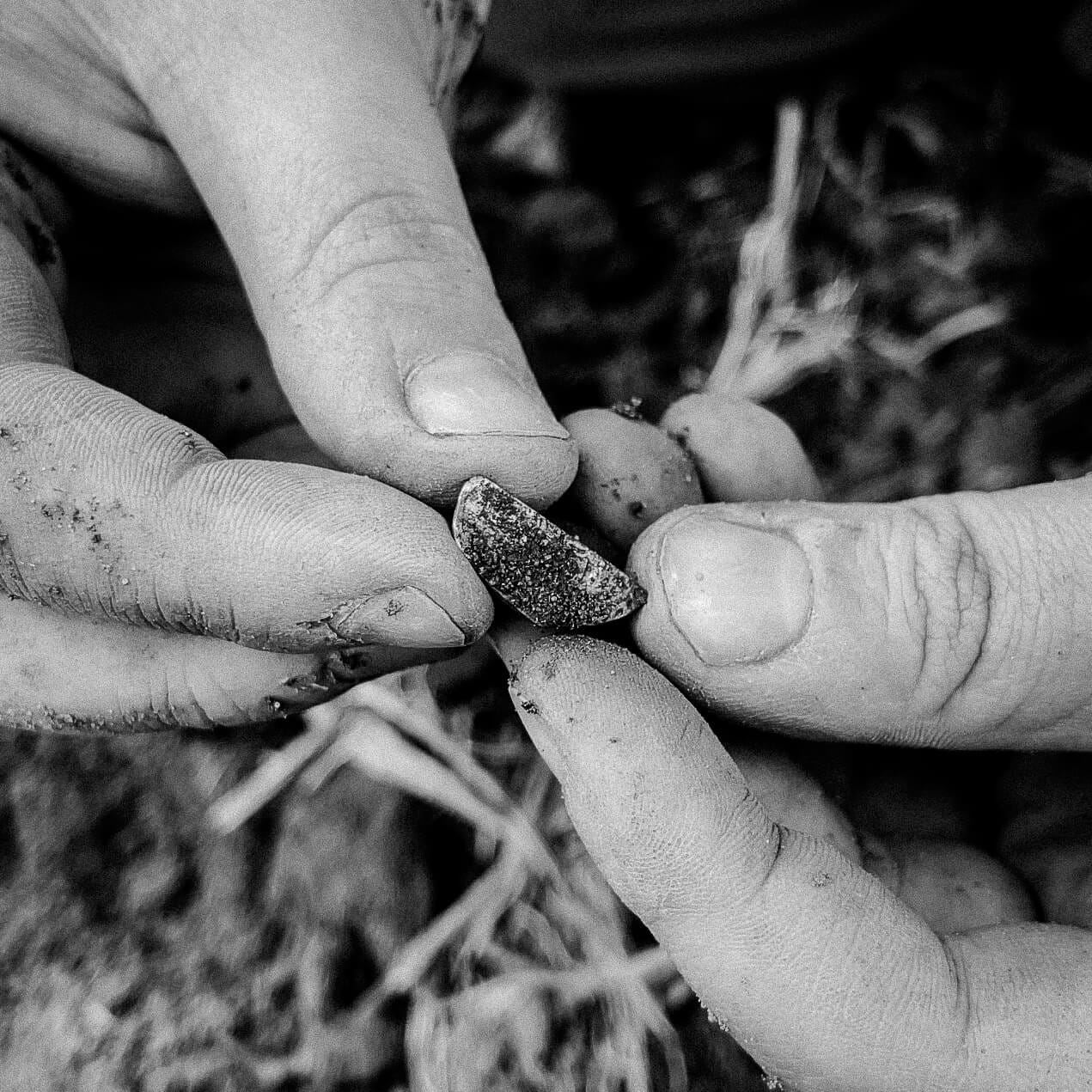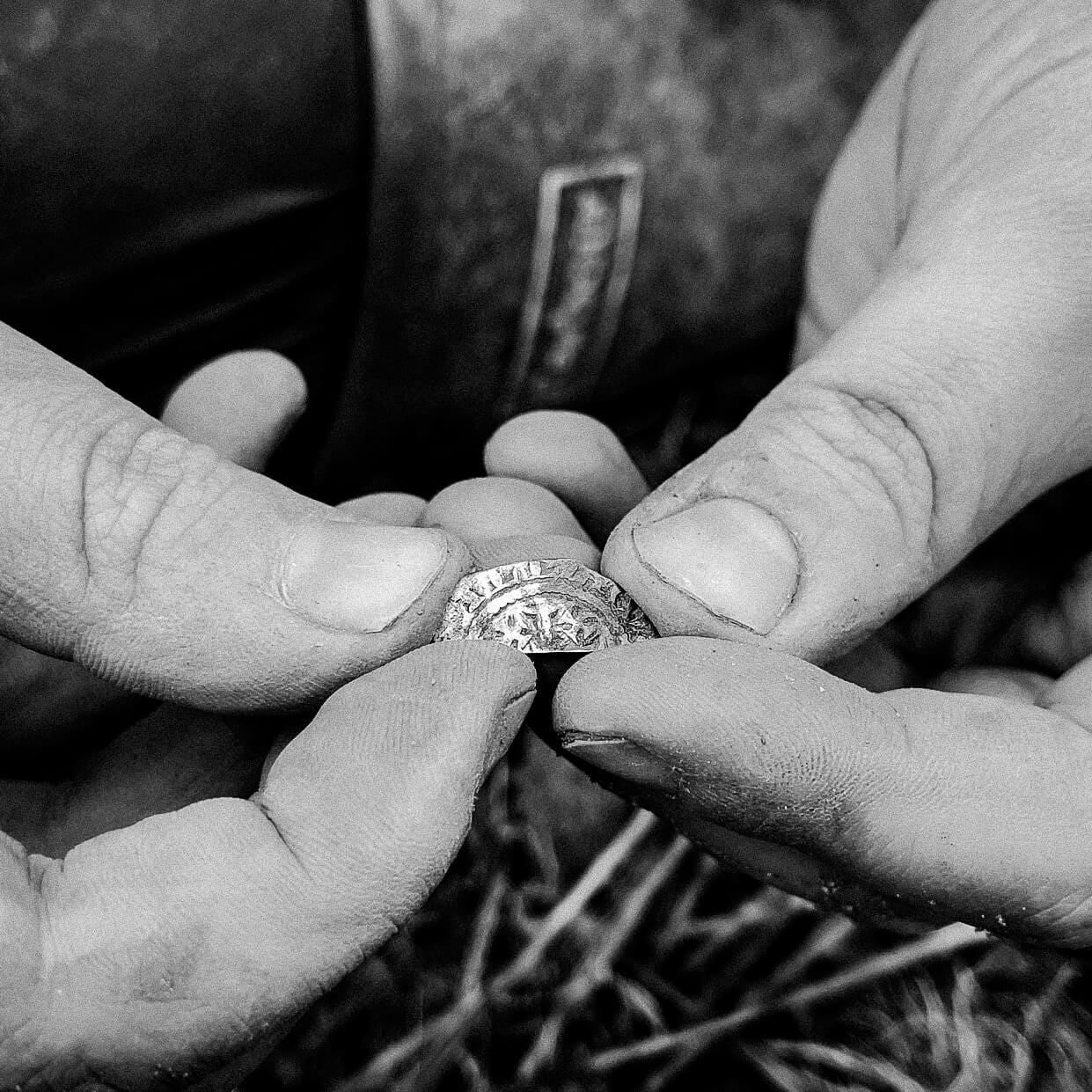It was hard work in the fields this week, the metal detecting gods made us work to break through a morning drought. But it was worth it, with the discovery of our earliest English penny yet unlocking a new era of history that we knew very little about …
1120 AD
The White Ship sank in the English Channel. A tragedy that not only saw the death of William Adelin, the rightful heir to the English throne but also sowed the seeds for England’s first civil war.
Almost a century had passed since the Norman invasion of 1066 and the English crown had passed to William the Conqueror's fourth son, King Henry I. Only now with the death of his only son, William, the line of succession was in crisis. The Royal Court was in chaos without an heir and Henry’s decision to appoint his daughter, Matilda, as the new heir didn’t go down well. For starters, Matilda was a woman, and her husband was Geoffrey of Anjou, a bitter rival to Normandy - a region in France that a new monarch was set to inherit.
The Royal Court was made to swear an oath of loyalty to Matilda and all was set for her to become the new Queen of England until her father died in 1135 AD and her cousin Stephen of Blois snatched the crown from right under her nose. Stephen had the nobility on his side and was quickly crowned King in the very same year. But this wasn’t an act that would be left unchallenged with Matilda launching a bitter and fierce campaign to win back the English throne; a period of social unrest, political fragmentation and a breakdown of law and order that lasted for nearly 2 decades.
‘In the days of this King there was nothing but strife, evil and robbery, for quickly the great men who were traitors rose against him.’ - The Anglo-Saxon Chronicle
This bloody and turbulent time became known as ‘The Anarchy’. Castles were built across England, churches found themselves fortified and estates and property were ravaged by the warring armies. As for the English Coinage, one that had been recently unified under Royal control, well it fractured into a series of official, unofficial, irregular and baronial types. Without a clear monarch, or clear loyalty, coins were minted in the name of the King, in the name of Matilda, Barons started assuming the right to mint coins in their name and they were even minted with deliberately garbled legends to show no loyalty to either, for fear of allying with the incorrect side.
So when Henry II, Matilda’s son, was made successor in the Treaty of Wallingford following Stephen’s death, England’s coins were one hot mess.
The glint of a silver edge …
Henry II
England’s first Plantagenet King. Most famous for his turbulent relationship with Thomas Becket who he appointed as Archbishop of Canterbury in 1161 AD, Henry II is credited for laying the foundation for Britain to become a dominant, global power.
He was just 21 years old when he succeeded the English throne in 1154 AD, he ruled more of France than any monarch since 871 AD and brought a nation wracked by civil war out of the ashes. And there was a lot to be sorted out. To retake power claimed by the Barons, within two years of his reign, Henry II tore down half of the illegal castles constructed during the Civil War, asserting his authority harshly over the nobility. Royal Government was completely reconstructed, and he laid down the basis for English Common Law as we still know it today. Then, of course, there was the coinage, one that was in crisis, filled with unofficial and irregular pennies that claimed no allegiance to the Royal Authority. A problem that needed to be resolved.
What details might be hiding beneath the dirt?
The Tealby Penny
The solution for the high proportion of irregular and sub-standard pennies that plagued the coinage of King Stephen saw Henry II minting the worst quality coins in English history.
This was a recoinage that saw a new standard introduced into English currency, the Tealby penny, a move made to restore the public’s confidence following the troubles of the civil war. 30 mints were involved in the initial production and distribution of these pennies, with this number gradually reduced to 12 once the recoining had been completed in an attempt to reign in the minting powers and bring the mints back under Royal control.
Yet these pennies are often poorly struck and can be found in all sorts of shapes that are far from circular. They succeeded in bringing material quality back into English coinage but failed in the production. It’s quite rare indeed to find a Tealby penny that hasn’t been so badly struck that it’s a puzzle to decipher.
Incredibly, the reverse has two distinct crosslets!
The Tealby Hoard
So what gives the Tealby penny its name?
In 1807, local ploughman George Tennyson made the discovery of a lifetime. A Roman pot containing nearly 6,000 silver coins, only these coins had been buried 7 centuries after the Romans withdrew from Britain.
This was a hoard of over 5,700 pennies from the reign of Henry II. Dating from 1158 - 1161 AD, the pot they were buried in would have been 900 years old at the time of their deposition, perhaps a cultural antiquity of significance chosen carefully as the treasures container. This class of coinage was little known about, and the discovery alone introduced 17 previously unknown Mint towns.
Found at Bayons Manor Farm near Tealby in Lincolnshire this was such a significant find that today Henry II’s coins are known as ‘Tealby’ pennies. So can you believe that only 604 of the ‘best specimens’ survive today, with over 5,000 coins melted down for their silver at the Tower Mint? A precious resource needed in the ongoing Napoleonic Wars that saw the economy valued over history.
‘This entire year, I’ve been desperate to find an early English penny, and this Tealby Penny has certainly delivered, with such a rich history and Lincolnshire connection, what more could you want!’ - Ellie












